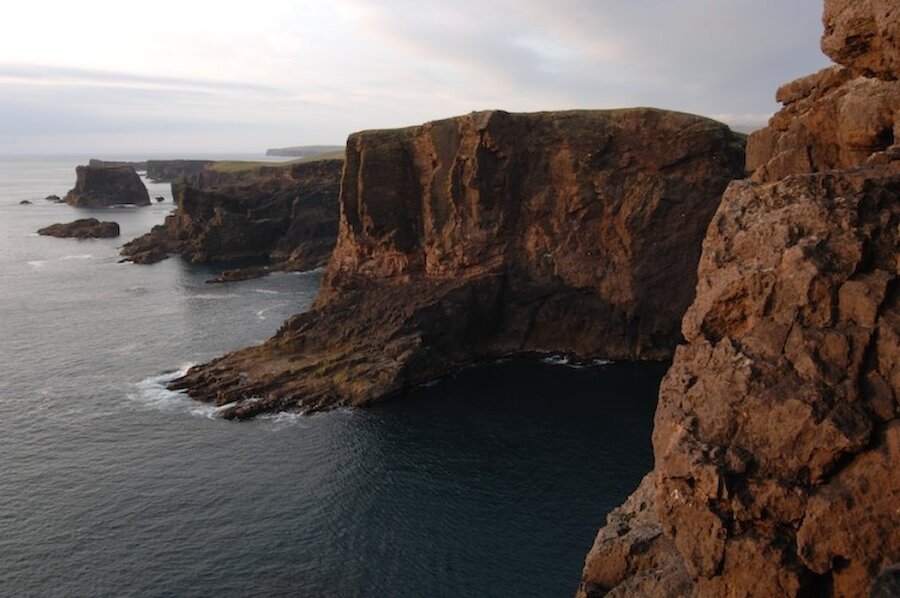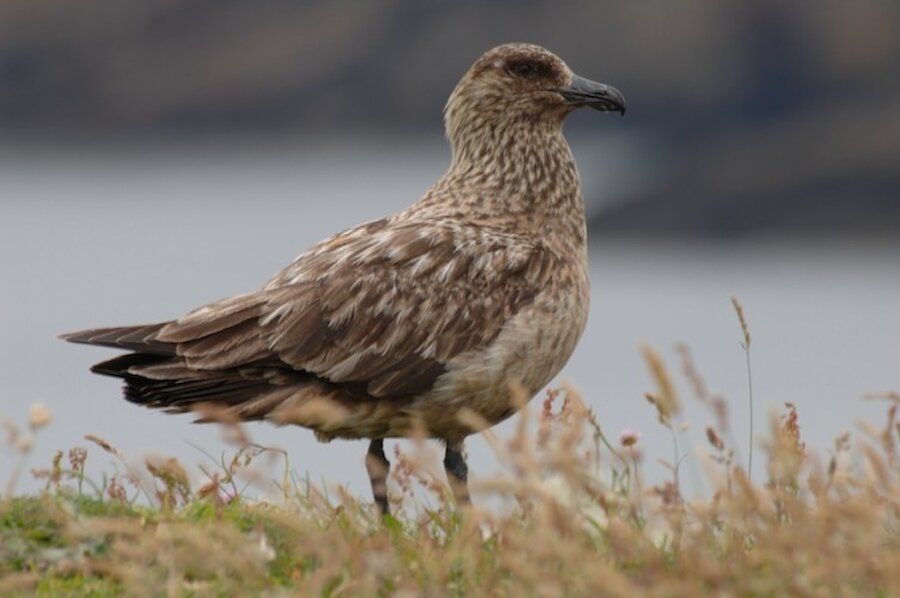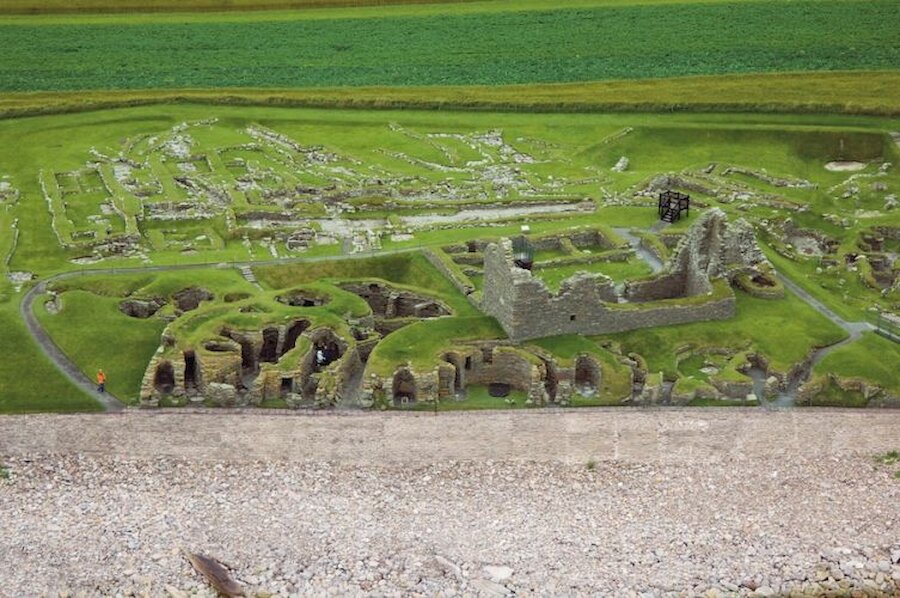As Shetland receives European Geopark Status, Robina Barton takes a look at Shetland's incredible geology and the work undertaken in Shetland UNESCO Global Geopark.
From the highest sheer cliffs in Britain to the best "hands on" exposure of the Great Glen Fault, Shetland is packed with an incredibly varied geology spanning almost 3 billion years. Where else can you walk on an ancient ocean floor, explore an extinct volcano and stroll across shifting sands all in the space of a day?
Shetland can boast all the main rock types found in the Scottish Highlands, except for the ancient sediments, which run down from Cape Wrath to Ullapool. The Scottish Highlands are globally famous for their geology, (it is no coincidence that the pioneers of modern geology came from Scotland), so for such a small area Shetland certainly has a lot to offer.
In fact, Shetland displays the most amazing diversity of geology in an area its size anywhere. The astonishing variety of rocks tell an amazing tale, not just about Shetland, but how the world itself has formed and changed. Epic events like oceans opening and closing and the formation and erosion of mountains, are written into the geological record of these islands and you don't have to be an expert to see them.
A geological journey
Shetland has been on an incredible geological journey, from close to the South Pole across the equator to its current position at the crossroads of the North Atlantic. Over hundreds of millions of years the climate and landscape have changed dramatically many times and echoes of these past environments have been literally set in stone. Who would have thought that this tiny windswept archipelago in the North Sea has played host to tropical seas, volcanoes, deserts, ice ages and ancient rivers?
600 million years ago, Shetland and Scotland were part of the continent we now call North America. Northern and Western Europe (including England) formed another two continents, and all three were separated by an Ocean – the Iapetus Ocean. The ancient North American continent was made partly of gneiss, (known as Lewisian Gneiss after the Isle of Lewis, where it is commonly found). This rock, seen in northern parts of Shetland today is about 2.8 billion years old! Slowly the ancient North American continent eroded and thick layers of sand and mud built up on the seabed around its coast.
When continents collide
Tectonic plates carrying the Earth's continents are constantly shifting, (which explains why Shetland was once to be found near the South Pole!) Between 500 and 420 million years ago the North American continent collided with those carrying Northern and Western Europe to form a huge new landmass called Pangaea. The layers of sediment on the seabed, which had now turned into rock, were crumpled during this massive collision. They were forced upwards to form an enormous mountain chain. This Caledonian mountain chain would have been similar in size to the Himalayas we know today
Death of an ocean
When Pangaea formed, part of the crust (sea-bed) of the Iapetus Ocean and the mantle beneath it were forced up over the top of the North American continental crust. In Unst and Fetlar, to the far north, serpentine rocks that originally formed on this ocean floor were driven up over continental rocks along two major thrusts. An exposed ocean crust is called an ophiolite and they occur very rarely. The Shetland ophiolite has been described as "the most compact, best exposed, complete and accessible in the world" by Professor Derek Flinn of Liverpool University.
Pangaea was a vast desert. By 400 million years ago Shetland was lying close to the equator and it experienced a tropical climate that varied from wet and humid to dry and arid – hard to believe today! Streams and rivers ran down from the Caledonian mountains and fed temporary lakes on the desert plain. During wetter periods the lakes could be long-lived and aquatic life evolved and thrived. Sandstones and mudstones built up from layers of sediments in these watery environments. When the creatures of the lake died, they sank to the bottom to be buried among the sediments. The remains of these strange primitive fish would become fossilized, and these fossils can be found today in areas around the south and west Mainland.


